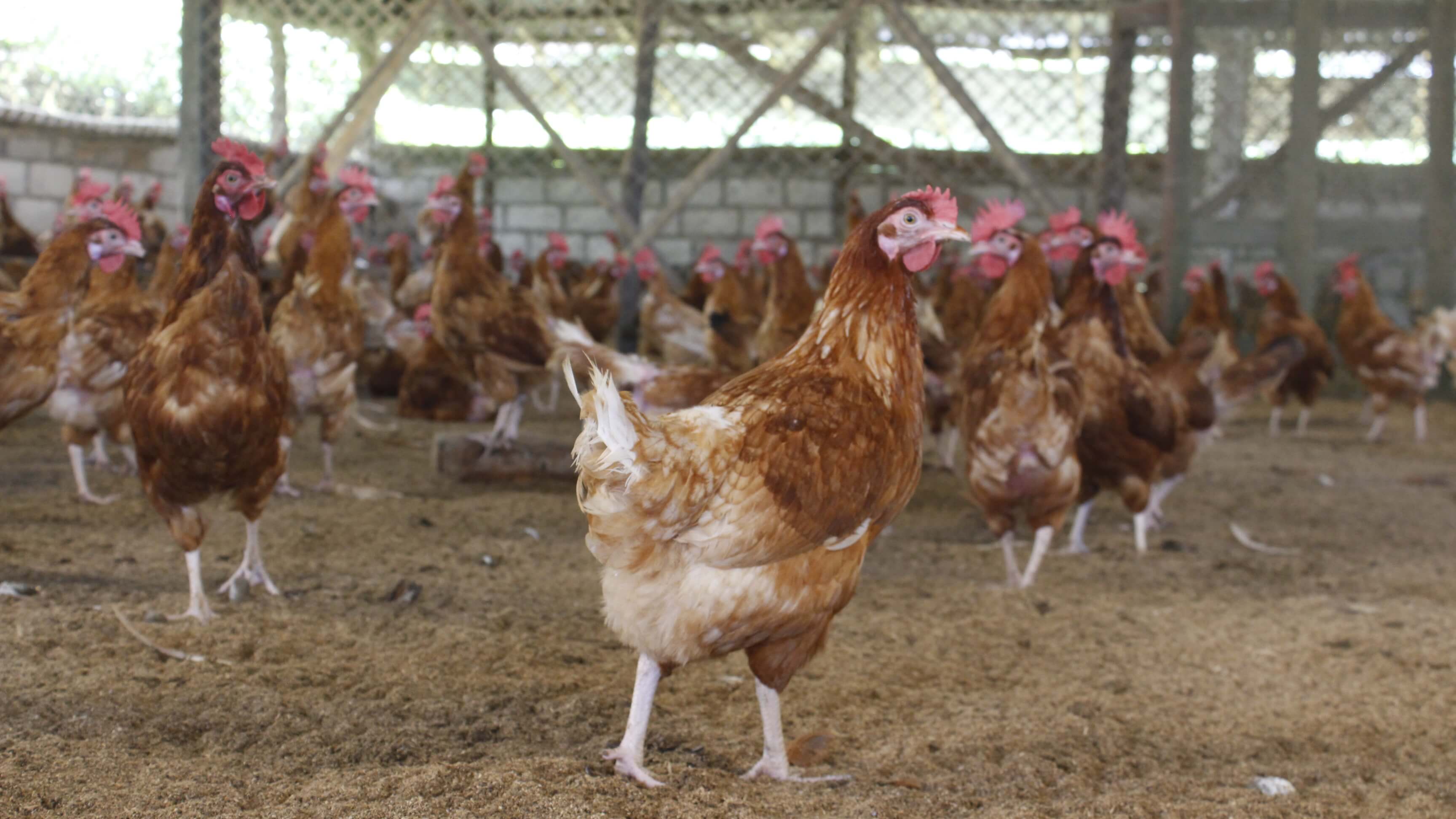
In the rural villages of Meghalaya, it is not an uncommon sight to see backyards rearing poultry. Poultry rearing is one of the most common practices in Meghalaya. This is accounted to favourable weather conditions for rearing birds. Apart from the usual agricultural practices, certain allied services such as poultry rearing give additional income to families. Most people in rural areas find it hard to access banks and financial institutions, hence they turn to other activities such as this as this is a way by which they can invest their savings and also make extra money. It acts as a way of ensuring that when they are in dire economic needs, they have a nest egg secure.
Poultry rearing however is not an easy task and the locally adopted method where the birds lay eggs on an open hard floor causes considerable loss. Other problems that plague poultry farmers are epidemic diseases whereby most of the poultry die. The more scientific layer poultry farm is however not cost-effective and most farmers would find this very expensive. There are mainly two types of chicken that are commonly reared in the state- the kuroiler and the broiler chicken.
To counter issues that poultry farmers face, Bah Wallamkupar Lyngrah, a Headmaster of a school at Mawsiatkhnam village, East Khasi Hills District has developed an innovative egg laying cabin which has reduced losses by a considerable amount. Wallamkupar observed that a majority of the birds preferred to lay eggs in dark corners; hence he built cabins of a specific size and dimension where the birds could lay eggs freely in low light. He also lined the cabins with sawdust; this measure ensured that there was 0 % breakage of eggs. In order to minimize disturbance of the birds, he collects the eggs which can be unhinged from the top of cabin.
The Knowledge Management (KM) team went to visit Bah Wallamkupar at his farm where he spoke on his innovative poultry rearing method.
KM: Can you tell us about yourself?
Bah Wallamkupar: I work as a Headmaster of Mawsiatkhnam Presbyterian Secondary School and besides teaching, I also rear chickens, pigs and farm agricultural produce.
KM: When did you start poultry rearing?
Bah Wallamkupar: I started poultry rearing in the year 2000 which comprised of mainly broiler chicken but later, as prices started dropping and because of bird flu, I incurred a huge amount of loss and I could not keep up with the cost of the bird feed, medicines and other daily expenses. Therefore i then decided to start rearing kuroiler chicken.
KM: Could you please tell us about the innovation.
Bah Wallamkupar: The chickens are kept in an open enclosure and there I have built cabins which are about a foot in size and the boxes are about 8 inches in height. The chickens go into the boxes just to lay the eggs; and because the boxes are dark, the other birds don’t fight as the red backside of the chicken is not visible. Bird fights are the main reason most egg laying birds die, hence this avoids it.
KM: How many birds are you rearing at the moment? How many eggs do you get per day?
Bah Wallamkupar: I currently have 1000 egg laying birds and every day, I get about 80 to 100 eggs. I sell each egg for INR 8 but with costs of rearing being INR 5 per egg, I make a profit of INR 3.
Each chicken consumes about 125 grams of feed per day and I have to raise and feed them for 6 months until they start laying eggs. I spend about INR 30,000 per week for all 1000 birds and after the birds stop laying eggs, I sell the chicken at INR 150 per kilogram.
KM: Has your innovation garnered success and popularity?
Bah Wallamkupar: Yes, I can say that it has. Some officials from the East Khasi Hills district came to have a look at my cabins and later on came back to take photos. They wanted to do research and see if this method already exists elsewhere. They found out that it was non-existent and I was asked to speak to ICAR scientists in Upper Shillong and explain the innovation to them. In 2014, I was sent to Tura to talk about my innovation and explain the workings to other poultry farmers and just recently in 2018, I was asked to speak at a function for farmers in Sikkim as an innovator. I also do give training to the villagers around here, so when they come and work for me they not only get their daily wages but also learn the skills to do this for themselves.
KM: What are the difficulties you have encountered and still face till date?
Bah Wallamkupar: The main difficulty I face is finding good help. People work for a little while but eventually leave. The work is demanding and we have to start collecting eggs from 6 am onwards. If we fail to keep an eye on this, the eggs pile and then break which causes more loss. Building cabins is a very hard job and I want to expand the poultry farm but until I get help that I can rely on, it will be extremely difficult to do so.